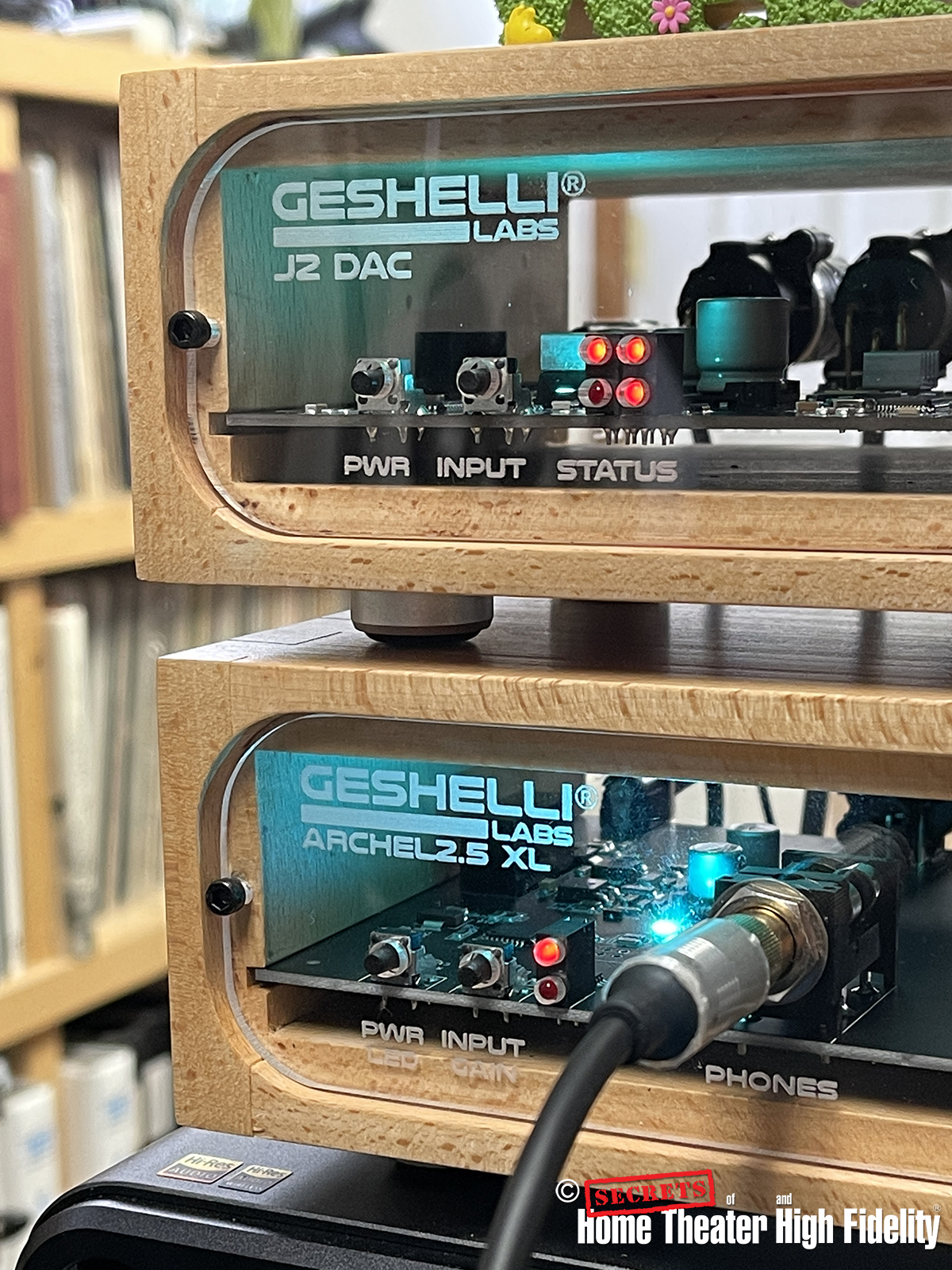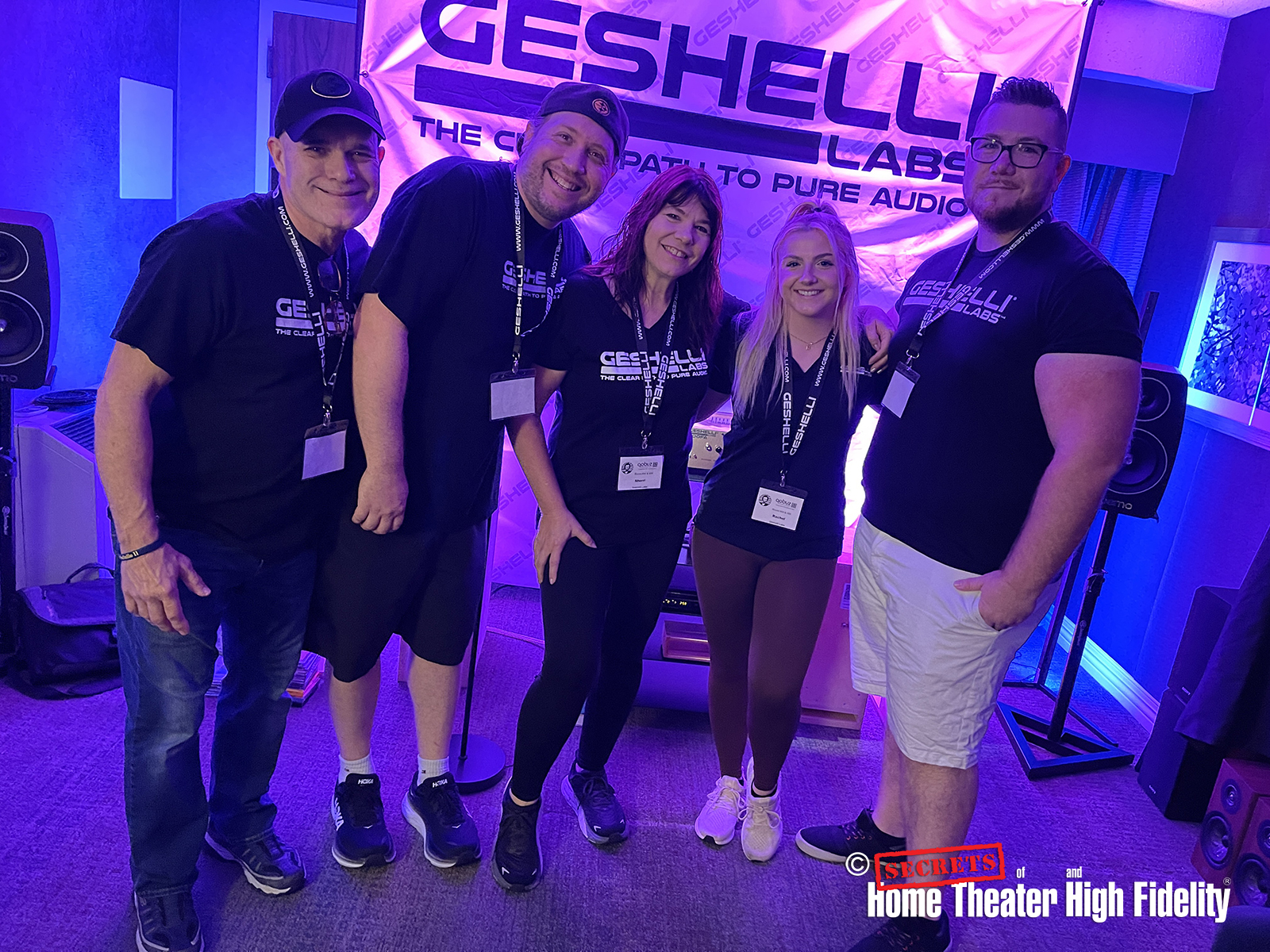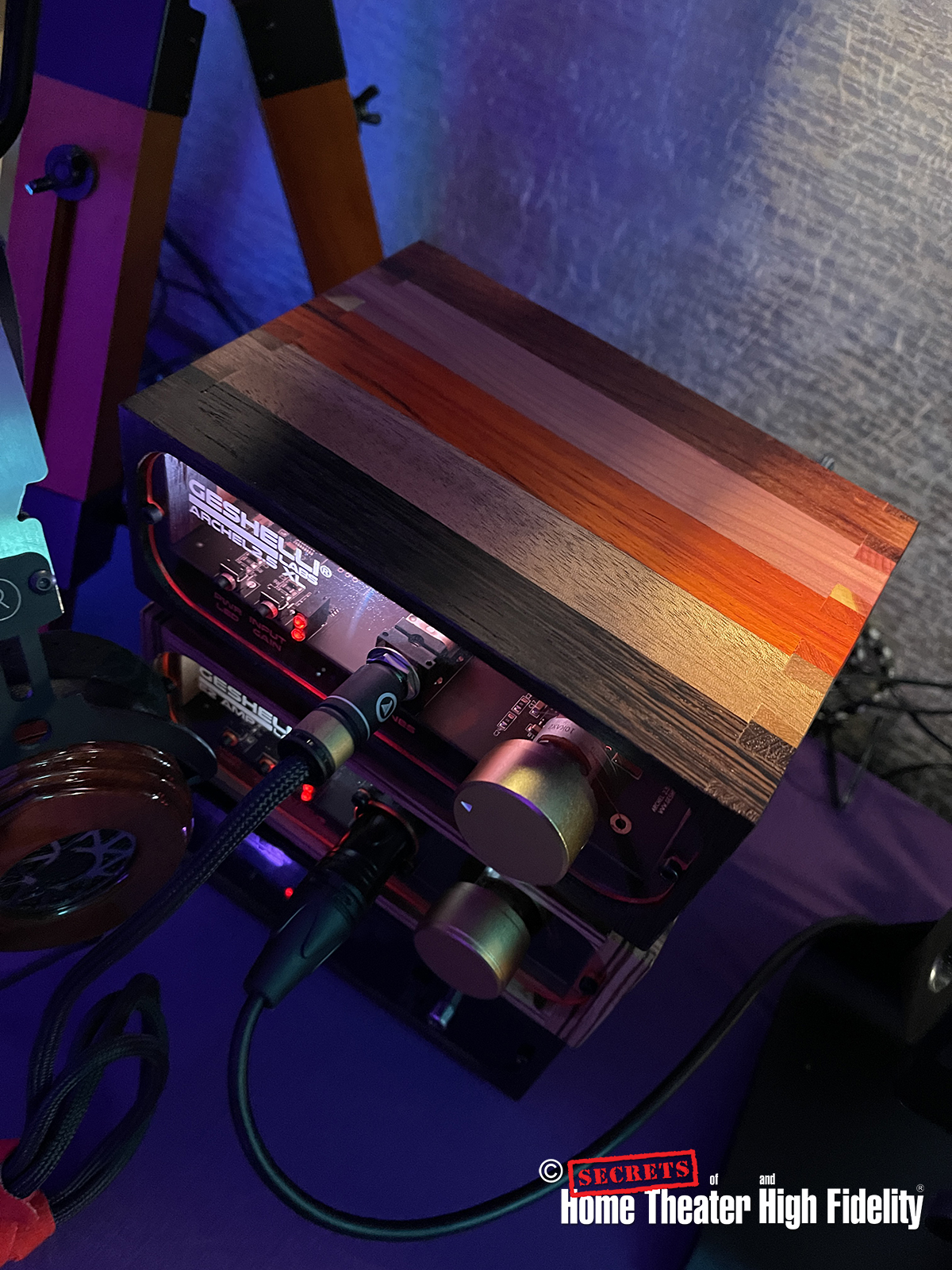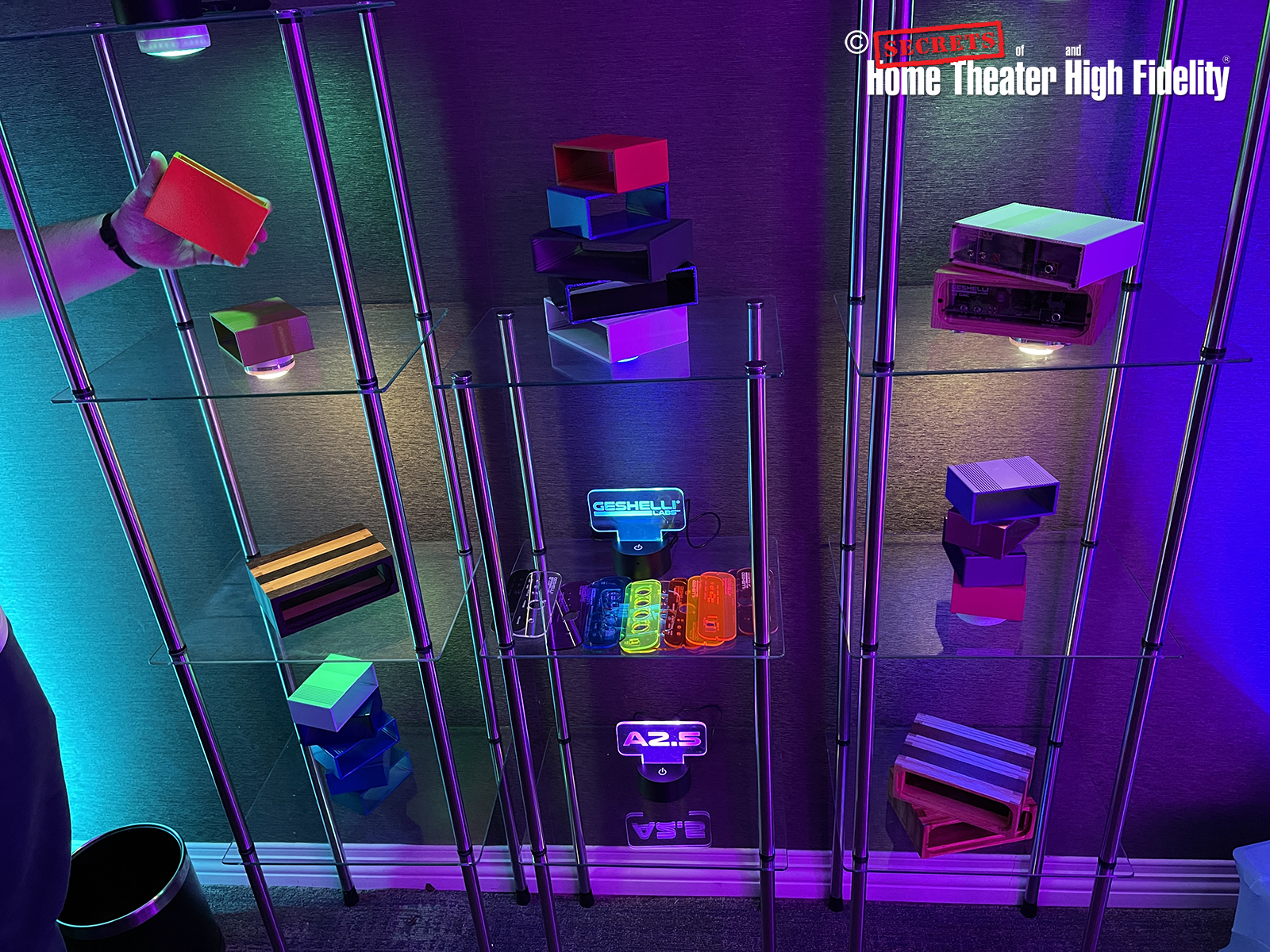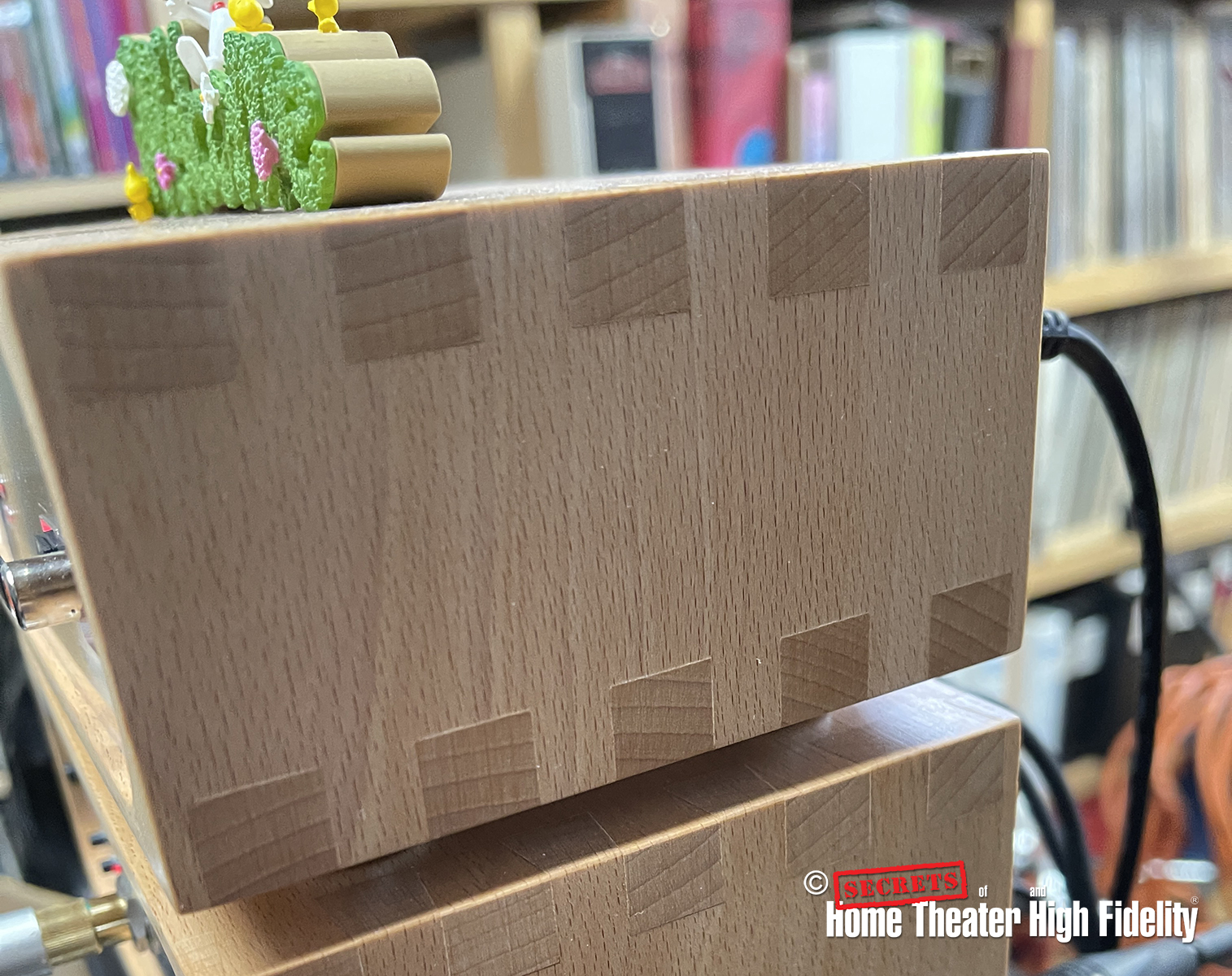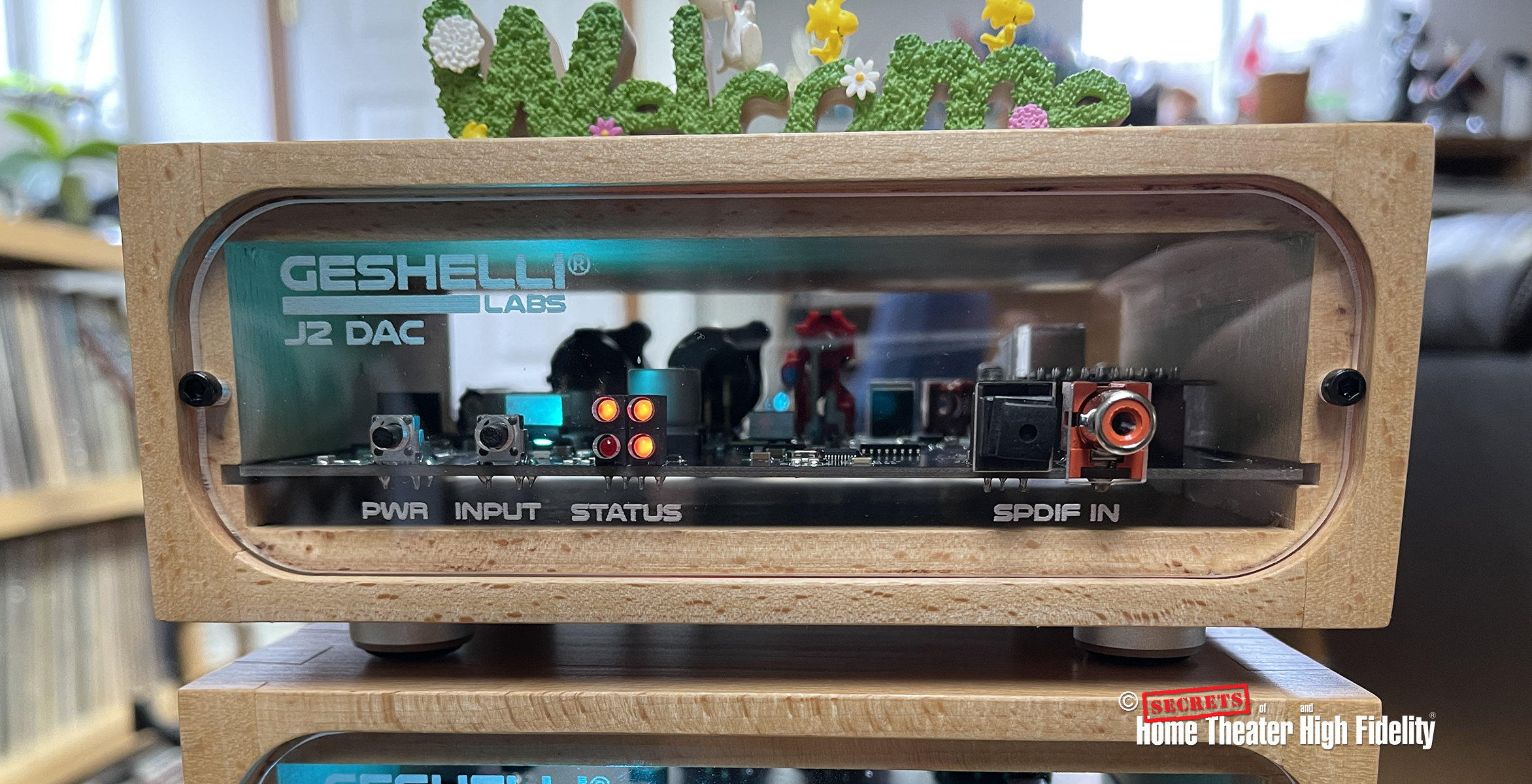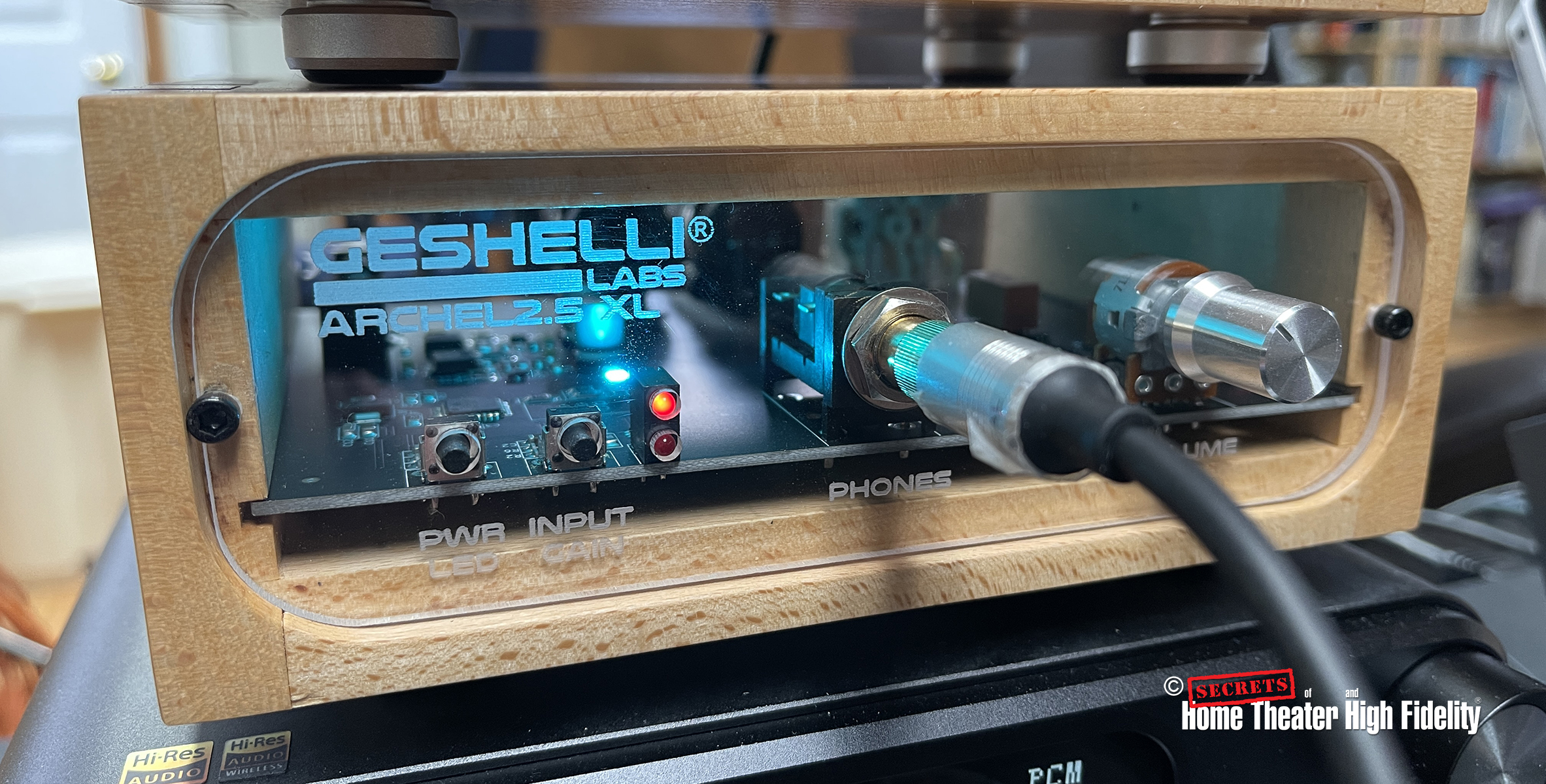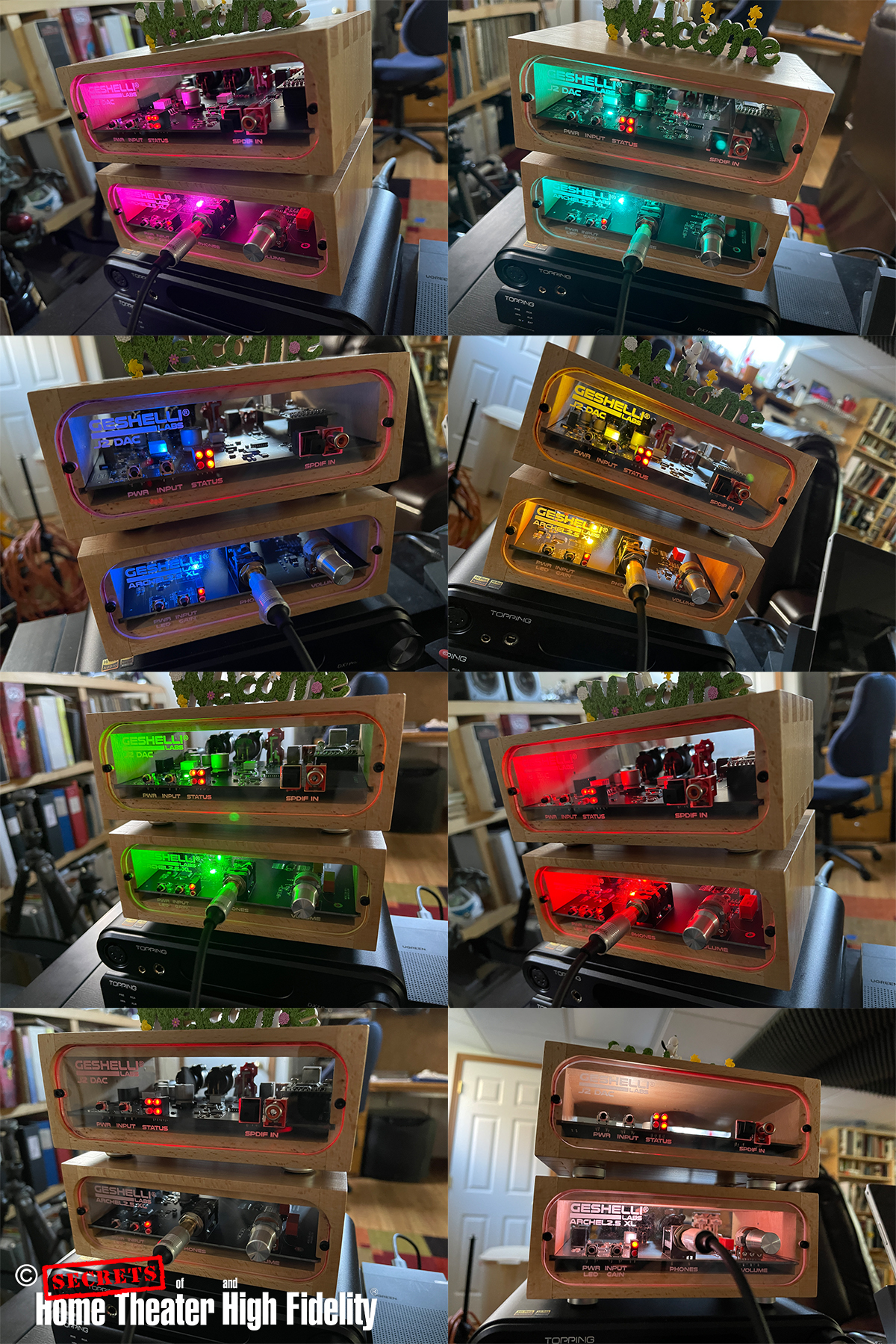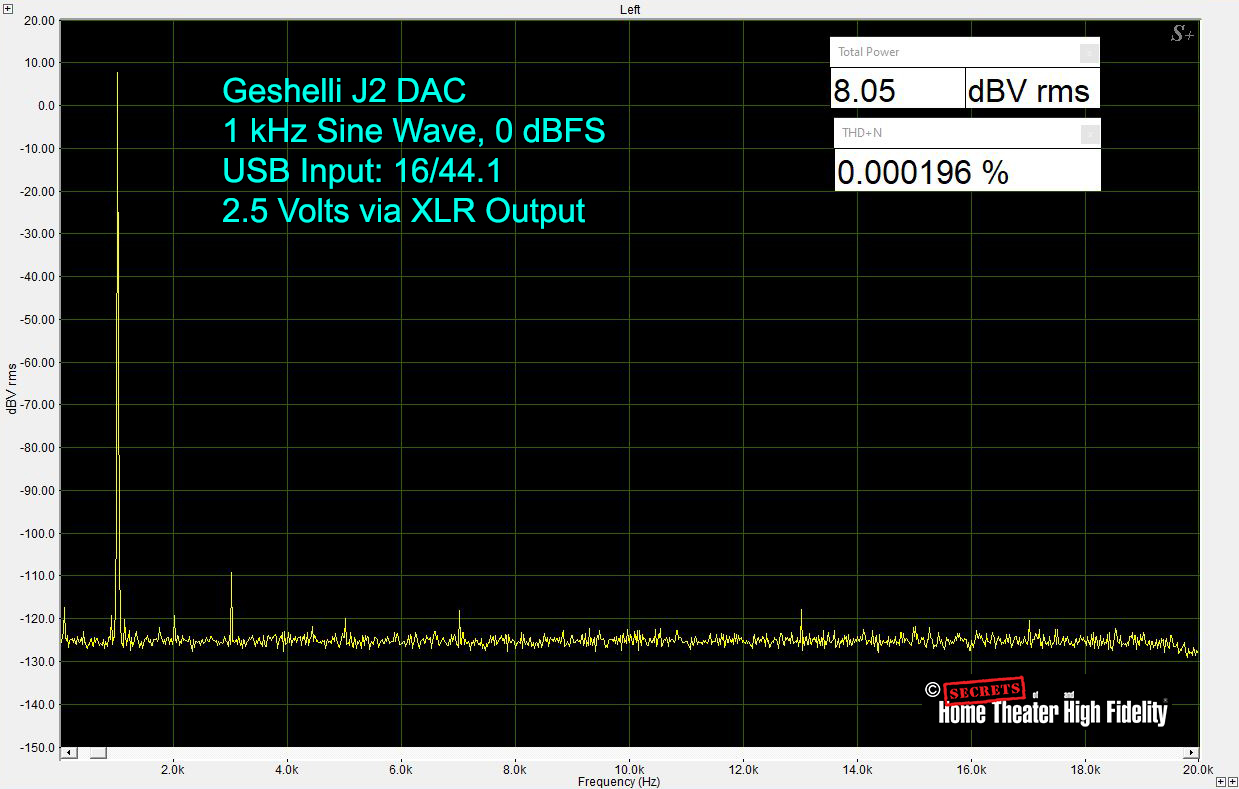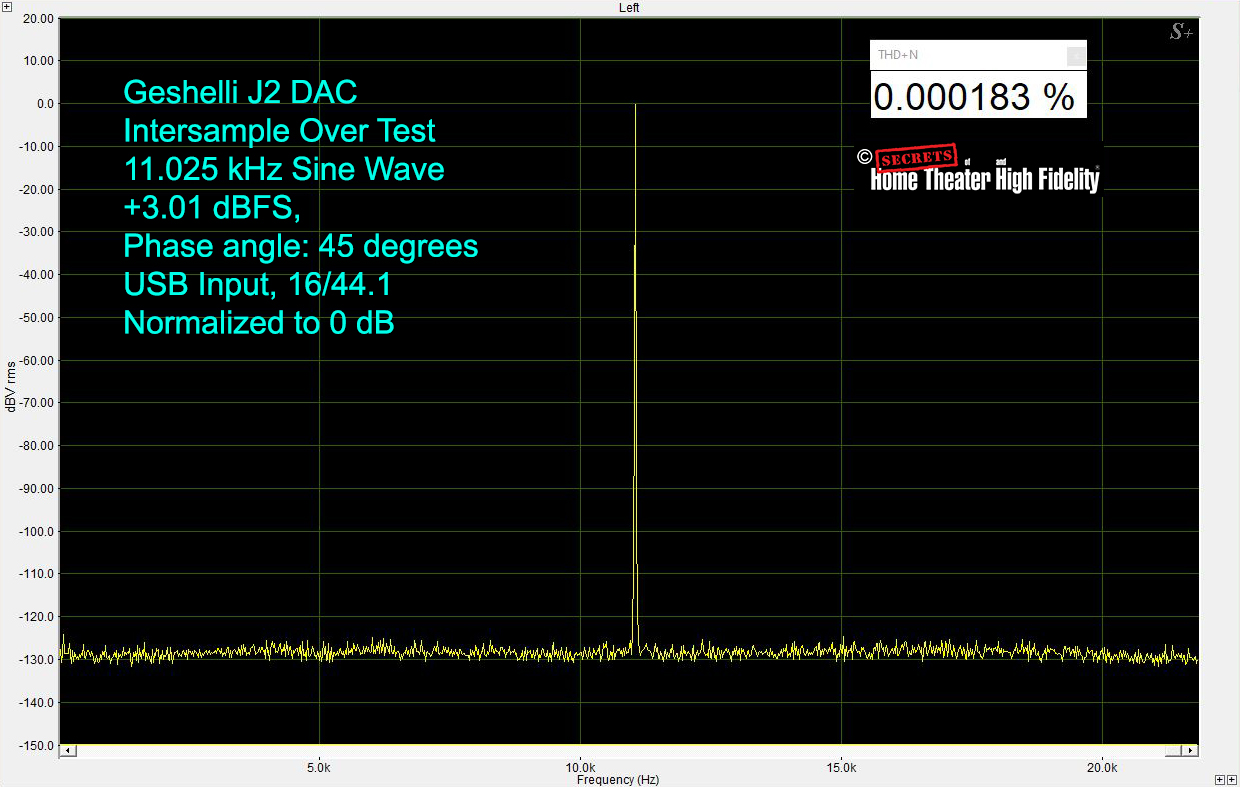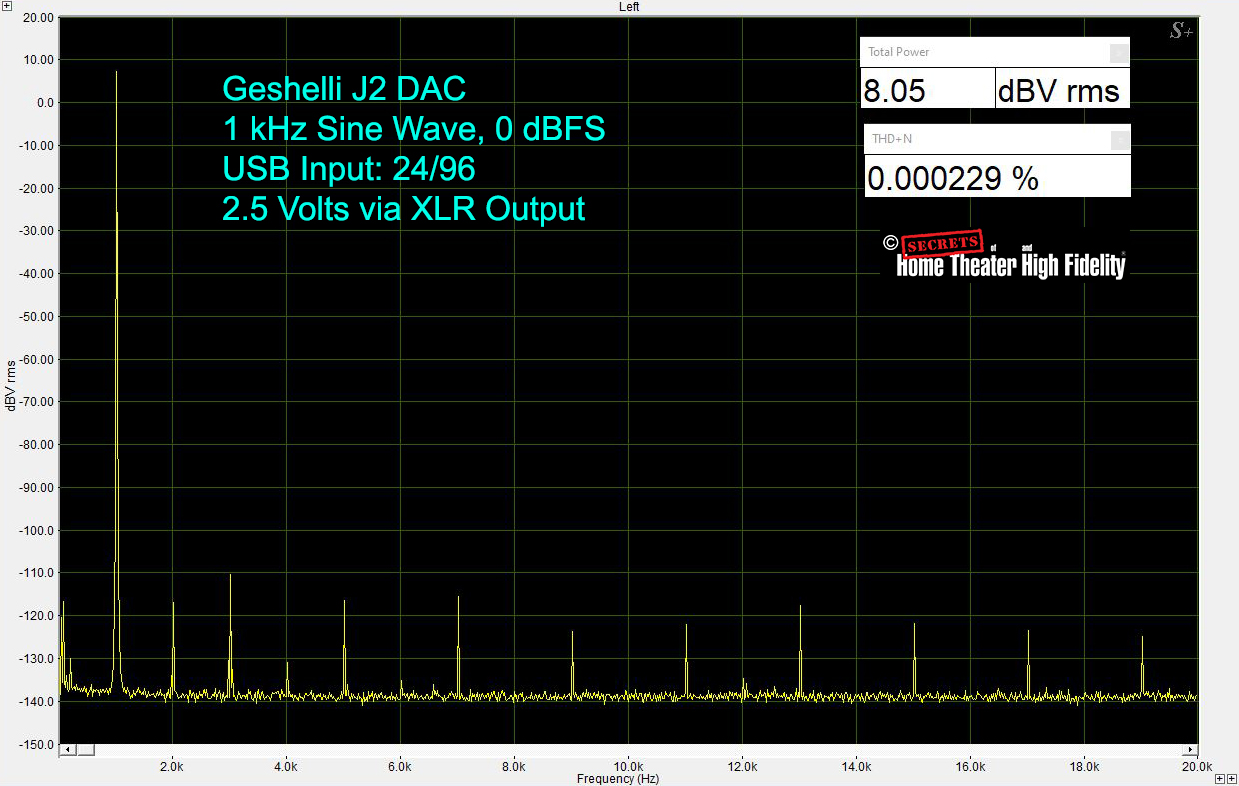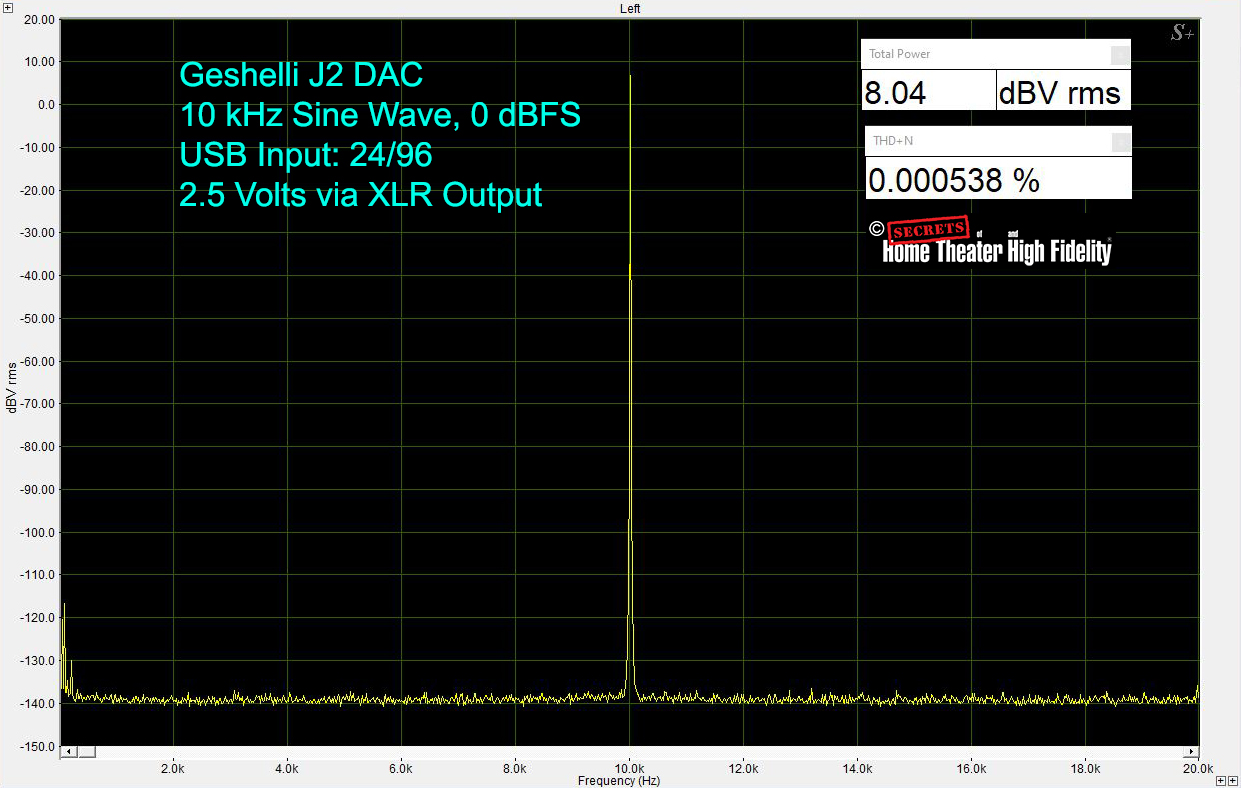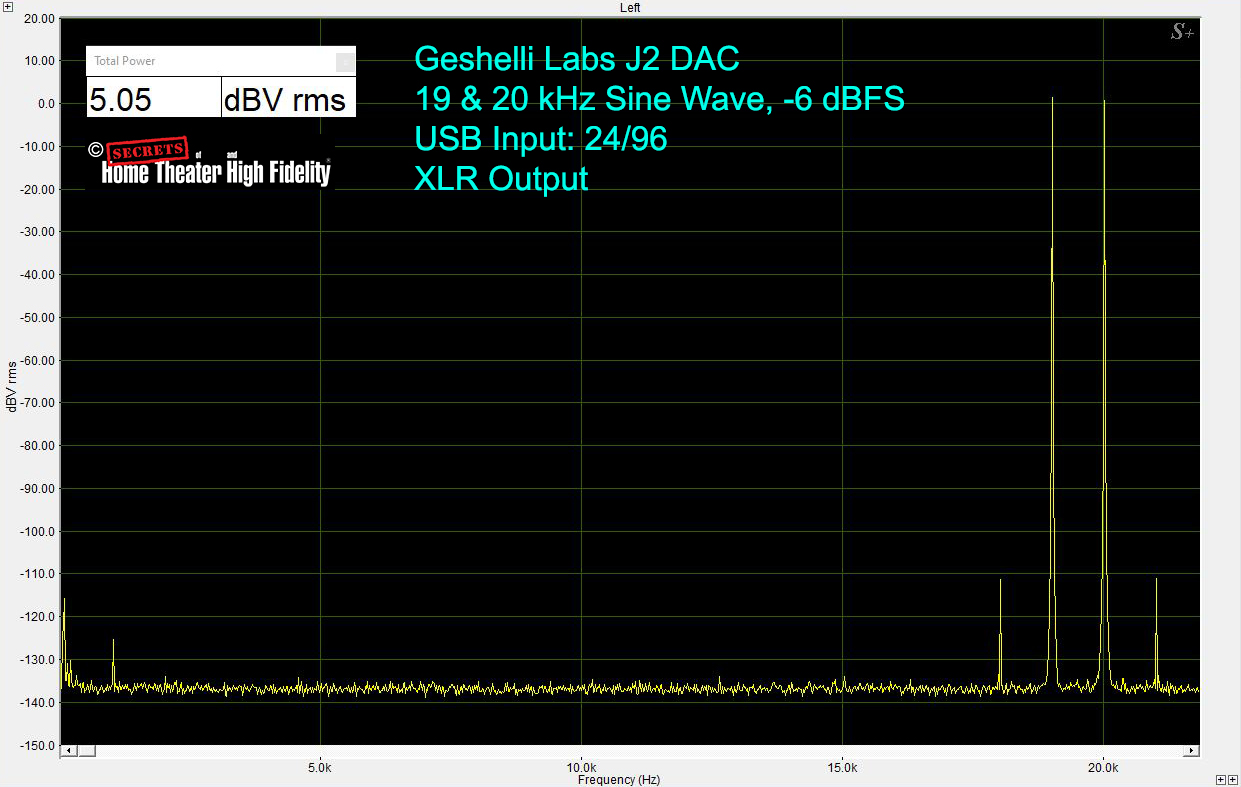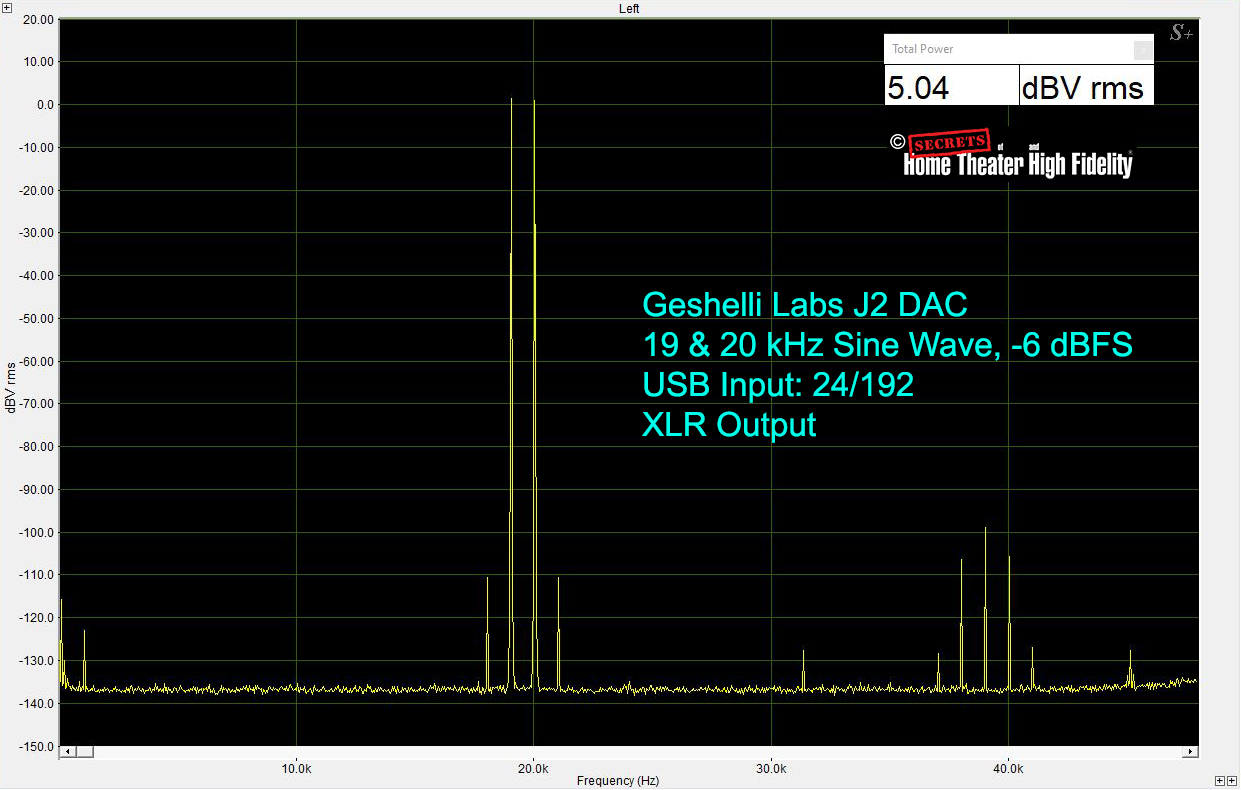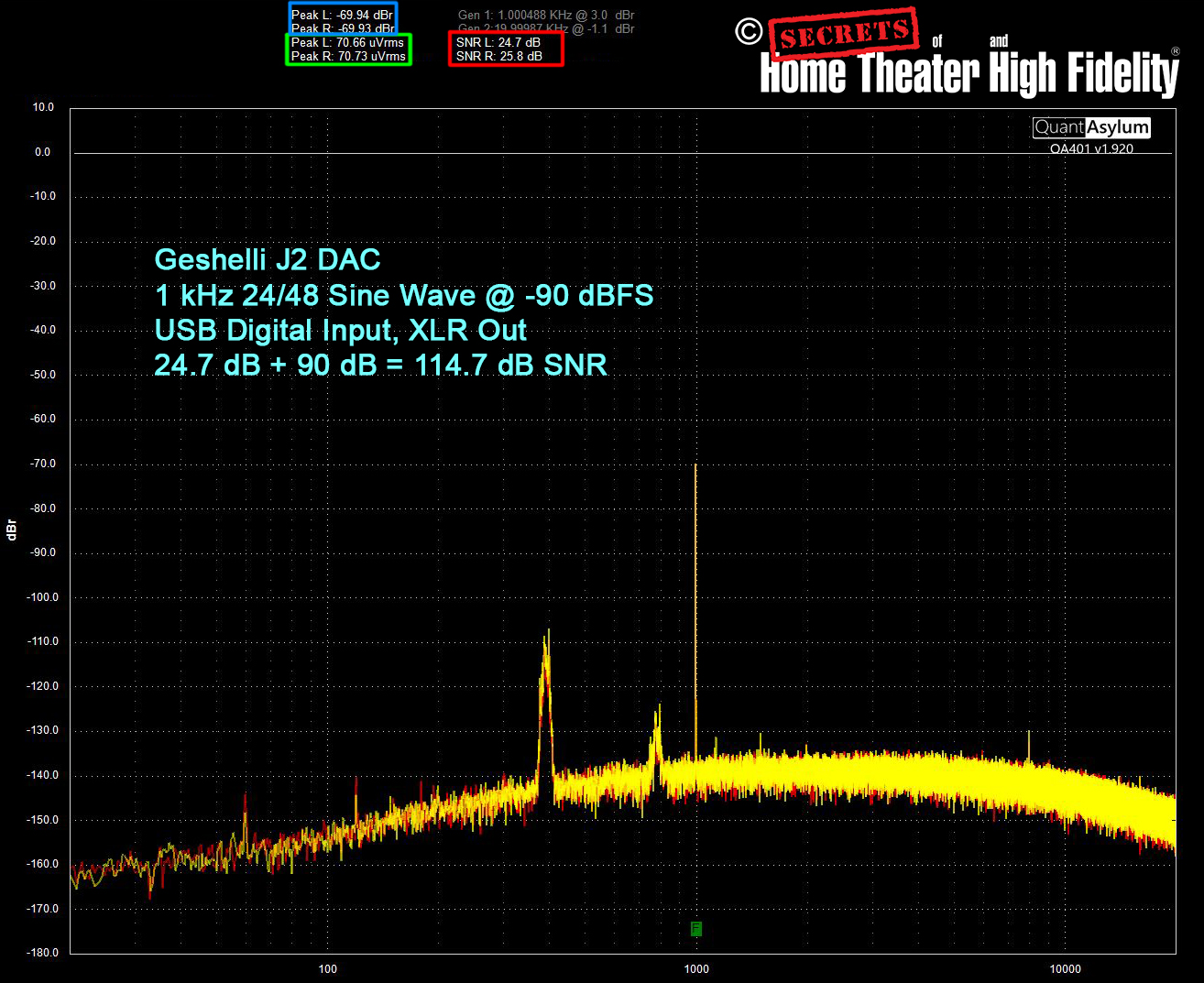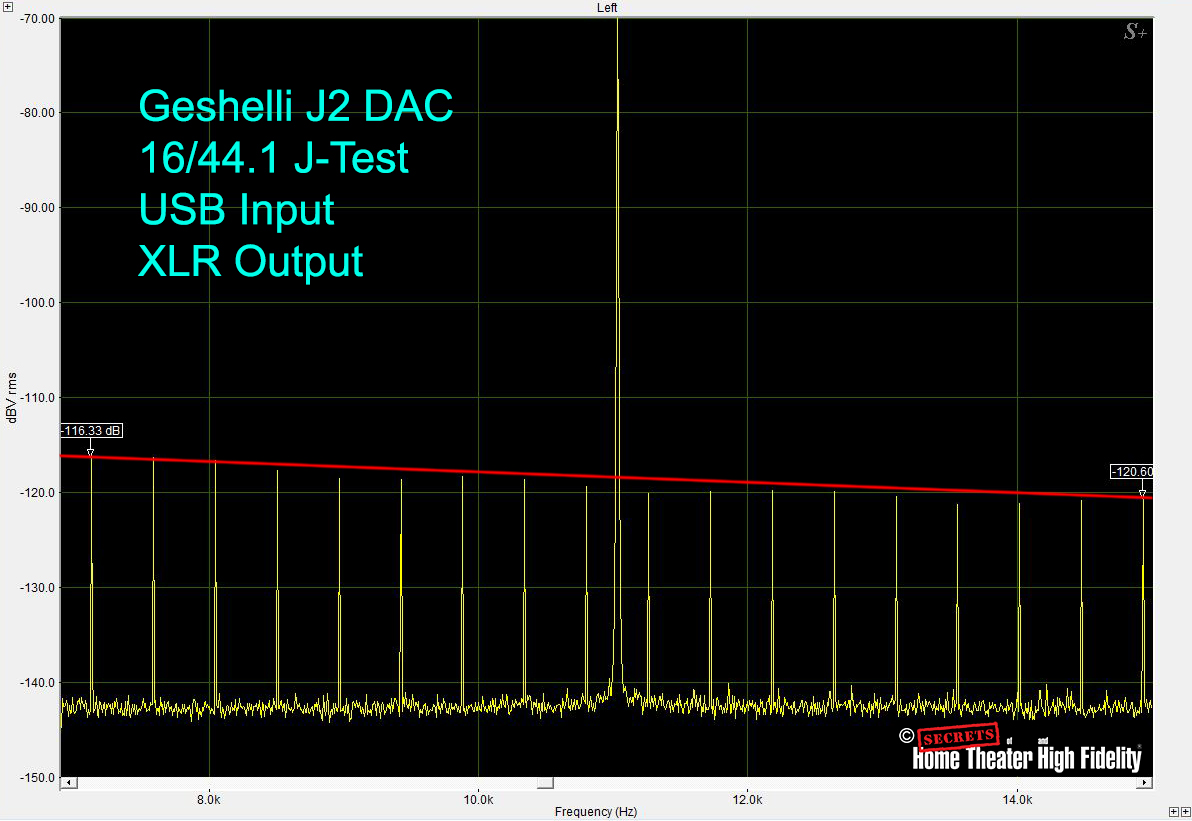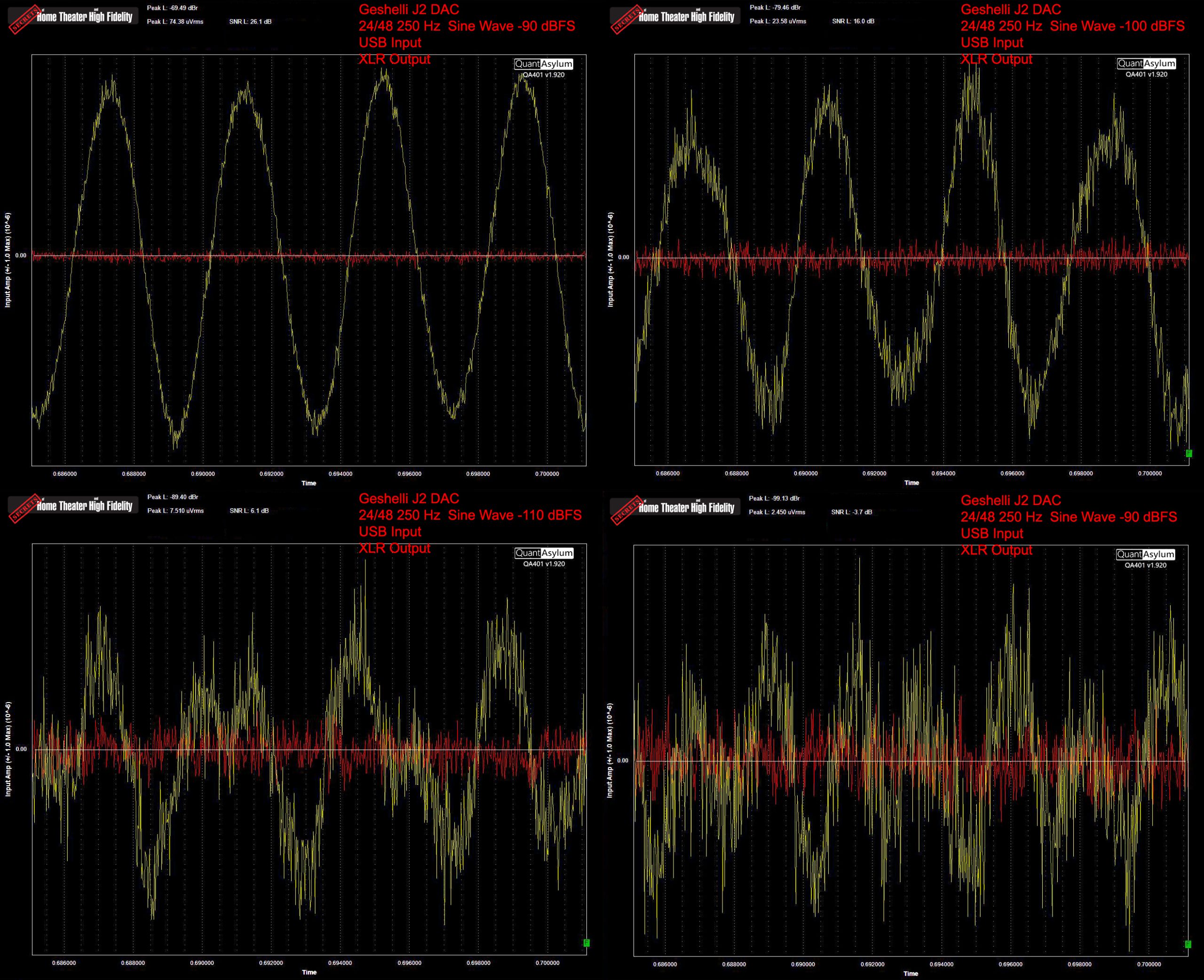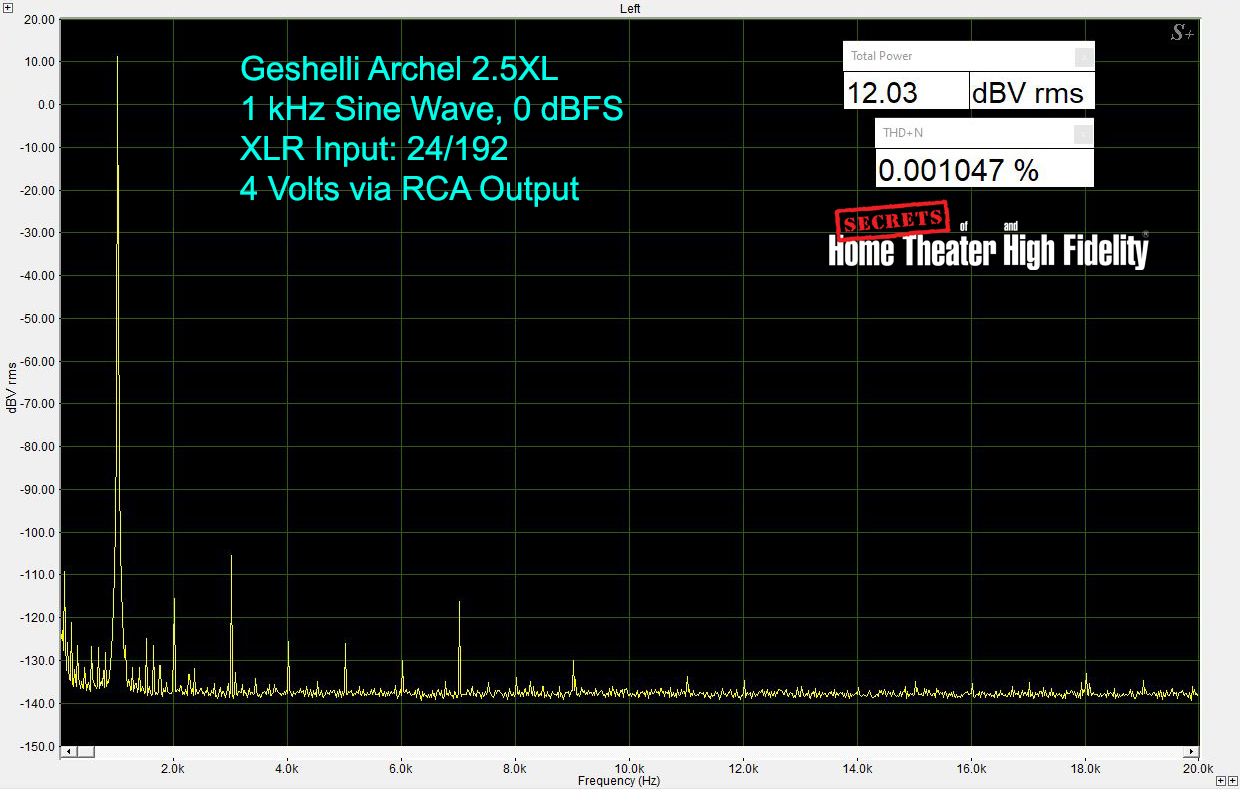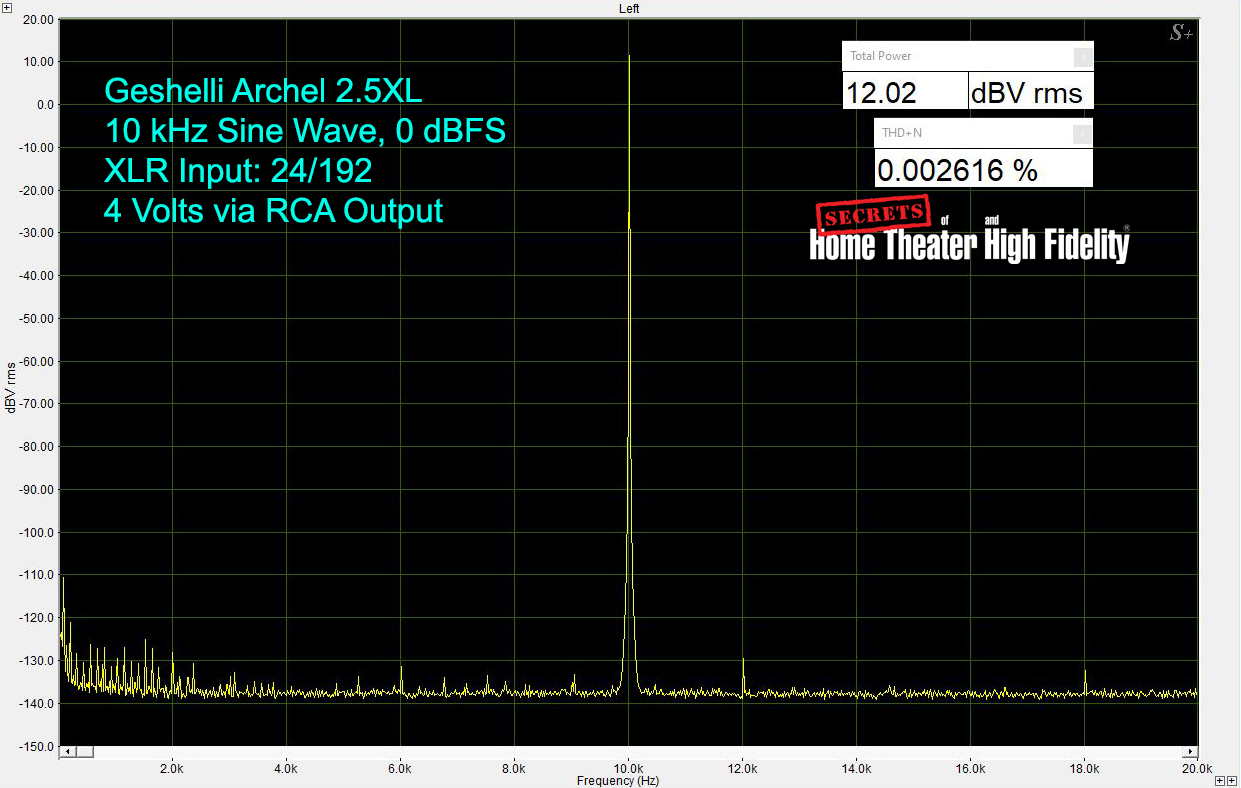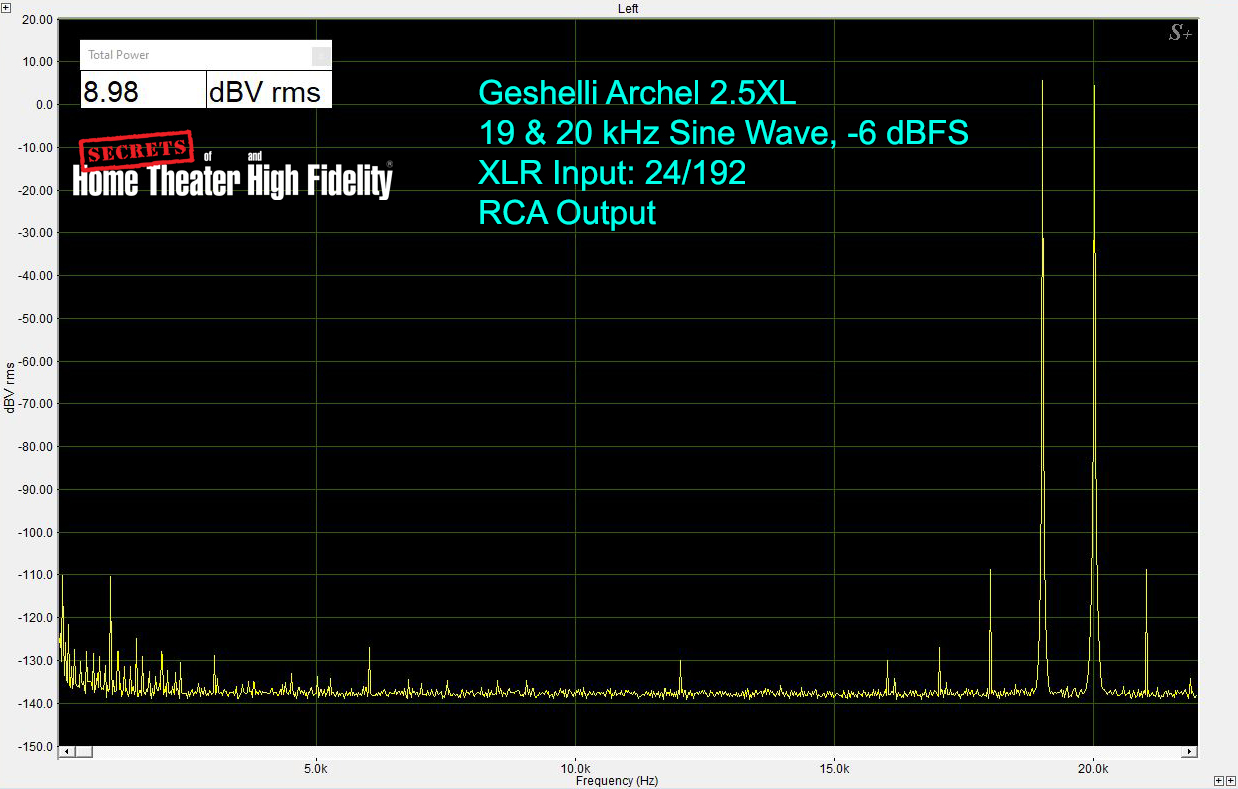In a veritable sea of inexpensive high-performance headphone amps and DACs flooding the market from China, Geshelli Labs stands like a uniquely American oasis. They combine custom-designed and built internal circuits with a level of enclosure customization that is especially refreshing to see. Particularly when one looks at the handmade wooden finish options. How they do this while keeping prices consistently reasonable is the best kind of audio mystery.
Geshelli Labs Archel 2.5XL Headphone amp and J2 DAC Highlights
- Archel 2.5XL headphone amp is rated at 2 watts per channel @ 32 ohms.
- Headphone amp has 2 levels of gain.
- Can also work as a basic preamp.
- Low distortion circuit and power supply design.
- J2 DAC can be ordered with either AKM or ESS chipset. (ES9026PRO in review sample).
- Amanero USB interface is available.
- Both amp and DAC can be ordered with custom aluminum or hand-finished wooden casework along with a choice of plexiglass faceplates.
I first stumbled across local Florida manufacturer Geshelli Labs at the 2022 Florida Audio Expo. They are based out of Melbourne, Florida, and were founded by Geno and Sherri Bisceglia. They specialize in the manufacturing of headphone amplifiers and DACs that the average audiophile Joe (me) can afford. Geshelli Labs is truly a family-run outfit (as can literally be seen in this picture).
Geno helps develop the circuit designs; Sherri handles all the organization and logistics and runs the powder coating machine; daughter Rachel handles surface mount soldering and runs the pick-and-place machine. Son Jake also does soldering, laser cutting, and looks after tech support. Even Jake’s girlfriend Courtney is put to work looking after parts ordering, customer care, and financing. Geno’s father Joe, who is a retired master woodworker, designs and finishes the gorgeous optional wood cases.
What is so cool to me is that this family business has the hutzpah to take on a segment of the audio market already brimming with inexpensive “me-too” headphone amps and DACs, mostly from overseas. But since they do it with their own unique style that visually stands out from the crowd, along with incorporating a healthy dash of that DIY Audio mentality, they’ve created their own little niche that has resonated with a lot of people in the headphone community. In fact, their popularity has grown at such a rate that they have already expanded manufacturing space twice and are expanding offerings to include a new integrated amplifier called the “Zoofa” that will start seeing full production later this year. They also own an Audio Precision measuring system to test all their designs so there is some solid engineering and design cred behind this whole “Little Engine that Could” operation.
Geshelli provides both balanced and single-ended choices for their headphone amps and either ESS or AKM chipset choices for their DACs. They are now also looking at offering discrete opamp choices from Sparkos Labs but that will be a discussion for another time. I asked Geshelli Labs to send along just a standard Archel 2.5XL amp and J2 DAC stack for evaluation to see what a regular Geshelli combo could do. So, without further ado, let’s get down to it!
Archel 2.5XL
Design:
2-channel, solid-state headphone amplifier.
Power output:
2 Watts Per Channel @ 32ohms.
THD + N:
< .000095% THD+N @ 2Vrms.
SNR:
> 124db SNR @ 2Vrms.
Inputs:
1 pair RCA, 1 pair XLR
Outputs:
1 pair RCA pre-out, Single 1/4” phono output.
Gain:
2 levels (Unity or 6x)
MSRP:
$269.98 (with beechwood case)
Options:
Several wood and aluminum color options for casework and plexiglass colors for front and back.
Dimensions:
4-7/8” Deep x 6-3/4” Wide x 3” Tall (Wood case, as tested.)
JNOG2 (J2) DAC
Design:
2-channel desktop DAC
Chipset:
Choice of ES9026PRO (default), ES9038Q2M, or AK44937.
USB interface:
Amanero USB module (optional $50 extra).
Resolution:
Up to 32-bit/384 kHz PCM (via USB). Up to DSD512 (via USB) Up to 24-bit/ 216 kHz (via SPDIF). Note, Optional Windows Driver required for DSD over USB.
Inputs:
2x Toslink, 2x Coax, 1 USB (optional).
Outputs:
1 pair RCA outputs, 1 pair XLR outputs.
THD+N:
< .0003%.
SNR:
> 121dB.
MSRP:
$349.98 (with Beechwood case and USB input.)
Options:
Several wood and aluminum color options for casework and plexiglass colors for front and back.
Dimensions:
4-7/8” Deep x 6-3/4” Wide x 3” Tall (Wood case, as tested.)op
Website:
SECRETS Tags:
geshelli, amp, dac, headphones, headamp, personalaudio, hifi
Starting with the obvious similarities, the Geshelli Archel 2.5XL and JNOG 2 (J2) DAC are dimensionally the same size which makes for a nice, tidy stack of goodness on your desk. And while you can opt for the standard, powder-coated, aluminum casing that is available in a choice of 5 colors, I am a sucker for the fine wooden casework that the company also offers. You can choose from 11 different species of wood that will range from a $50 to $100 up-charge on your order. And not that I am promising anything, but the company has been open to the occasional custom request too, depending on how busy they are. The Beechwood cases of the review samples looked tasteful and were expertly finished.
Delving into the J2 DAC a little further, Geshelli Labs offers buyers a choice between 3 DAC chipsets. The ESS ES9026PRO is the default choice, while the ESS ES9038Q2M and AKM AK4493 are available as no-cost options. An Asynchronous USB input is a $50 option when one places an order. For the USB input, Geshelli Labs has chosen to go with the Amanero USB module due to its robust driver and consistent technical support. The J2 uses twin TI656/TI1612 opamps for the XLR outputs and a single identical opamp for the RCA outputs. Geshelli has recently announced that an upcoming version of the J2 DAC will be available with discrete opamps from Sparkos Labs along with socketed connectors to allow for opamp “rolling.” No doubt this sort of option will very much appeal to many of the diehards of the “head-fi” community that Geshelli Labs is dialed-in to.
On the outside, the J2 DAC also conveniently features a set of SPDIF digital inputs on the front panel as well as on the back. The front transparent panel has two push switches, the one on the left is for power on/off and cycles through several internal lighting colors. The switch on the right cycles through the available digital inputs which are somewhat cryptically indicated by an array of 4 red LEDs further right of the switch. This unlabeled display of LEDs is my biggest nitpick with the J2. I would need to refer a few times to the online manual to make sure that I was on the correct input. Some sort of labeling of the active input lights would be helpful to less hip, grumpy old codgers like me, but it’s by no means a deal-breaker. The backside has the RCA and XLR analog outputs along with the aforementioned SPDIF inputs, a USB input, and a 12V DC power connector for the included power supply.
The inside of the Archel 2.5XL headphone amplifier is based on a Texas Instruments TI1612 opamp core. It has a high-quality analog potentiometer for volume control, and two levels of gain to choose from, unity gain and 6x. Otherwise, the Archel 2.5XL is designed with an eye toward low-distortion performance.
The front panel of the Archel 2.5XL starts, from left to right, with the simple power switch, followed by an identical button that controls both the input selection and the gain. Next is a 1/4” unbalanced phono jack followed by the volume control. The backside has a pair of RCA inputs, a pair of RCA outputs, a pair of XLR outputs, and finally the 12V power connector.
One last detail to note that applies to both units: short presses on the power button cycles through about a half dozen different internal lighting colors. Snazzy!
Both the Archel 2.5XL and the J2 DAC are designed to neatly stack on each other when in use and that’s exactly how I had them set up at my headphone listening station. The connection between the two was via balanced XLR cables. The J2 DAC was connected to my Microsoft Surface 3 PRO tablet in a docking station that acted as my ROON core and managed my entire digital music library. I used a variety of open and closed-back headphones that I have on hand during the evaluation. Oh, and I fancied the turquoise light’s color, ambiance, and vibe for much of the review.
From the first few minutes of listening to the Geshelli rig, it was pretty apparent that this $620.00 (as tested) DAC/headphone amp stack brings a ton of sonic performance to the table. The only feature really missing in its complement is a balanced headphone output, but Geshelli Labs feels that their purpose-made balanced-only amplifier, the Erish2, is a better solution in the same form factor rather than combining both connections in one amp. I can appreciate the concept of a dedicated design for a dedicated task.
Secrets Sponsor
In a nutshell, the Geshelli stack provides an outstanding level of transparency in sound and power on tap. Over the few months that these two pretty wooden boxes have been here, I would be bouncing between them and the Topping DX7 PRO+/ A90 Discrete DAC/AMP combo with the same headphones and music, and sonically I couldn’t find any difference. Only when swapping the DX7 PRO+ for the D90SE DAC did the game start changing slightly in Topping’s favor, but even then, the Geshelli stack was more than holding its own for the money. Now I don’t have any seriously difficult-to-drive headphones around to test with currently. However, both my HIFIMAN HE1000V2 and my Beyerdynamic DT880PRO 250-ohm cans do require a bit of juice to get them singing adequately, and the Archel 2.5XL was more than up to the task. The little Geshelli Labs amp easily and cleanly gets both headphones to beyond-comfortable listening volumes with room yet to spare. In truth, any of the over half dozen headphones I tried with the Geshelli stack simply sounded fantastic and did not require my getting out of the Archel 2.5XL’s lower gain mode at any point. At its higher gain setting, I frankly can’t imagine a set of headphones it couldn’t run.
Secrets Sponsor
If I am after coloration, embellishing, or just a particular sound with headphones, I’ll likely turn to a tube or some kind of hybrid amp. When it comes to solid-state headphone amps and DACs however, I favor transparency above all else. I want to hear everything I can about a headphone without the amp or DAC getting in the way or acting as a tone control.

Duduka Fonseca & Quarteto Universal “Yes!!!”
When listening to something like the minute-and-a-half opening drum kit solo on “Transition,” from Duduka da Fonseca’s “Yes!!!” album, the Geshelli stack lets me clearly experience the full palette of sounds he creates. The speed of the transients, the decay of the impacts, and the different details of the sounds of the various drums all come through cleanly. But even more importantly, they let me fully experience the differences when listening to “Transition” on a pair of new Focal Utopias versus a pair of HIFIMAN HE1000V2, or my Dan Clark Audio Aeon 2 Noire versus the Meze 109 PRO headphones. The Geshelli components get out of the way and let the headphones do the talking which is exactly what I want.

Ann Hampton Callaway “Fever: A Peggy Lee Celebration”
The same thing happens when listening to Ann Hampton Callaway’s vocals on her breathy rendition of “Fever” from her recent “Fever: A Peggy Lee Celebration” album. Every nuance of her performance comes through without any noticeable embellishment. The only way that gets modestly better for me is stepping up to the Topping D90se/A90 Discrete combo. Getting seriously better requires moving to something like a Benchmark HPA4/ DAC3 B combo. Both are significant steps up in price and highlight just what kind of a value proposition this little family-run company is providing for its customers.
Measurements by Carlo Lo Raso with Analysis by Carlo Lo Raso and David A. Rich.
For THD and frequency response tests, I used my Lynx E22 professional soundcard teamed with SpectraPLUS measurement software. For square analysis along with SNR measurements, I used the Quantasylum QA401 analyzer and its associated software. REW software was also used to obtain frequency response measurements where indicated.
Starting with the Geshelli Labs J2 DAC, when measured with a voltmeter the following values were observed at the outputs when a 1 kHz, 0 dB test tone was applied: 2.50 Volts at the RCA outputs and identically 2.50 Volts at the XLR outputs.
Unless otherwise indicated, all measurements were done using the XLR outputs. Distortion figures are rounded to the fourth decimal point.
Here we have the first of the 16-bit 44.1 kHz tests. I did them through both the SPDIF Coax and USB inputs and the results proved to be essentially identical. I am showing the USB ones here. A 1 kHz sine wave at 0 dBFS output through analog XLR jacks (2.5V) produced a THD + N of 0.0002%. The spectrum is clear with a small amount of third-order harmonic of inconsequential value.
A 16/44 10 kHz sine wave at 0 dB through the XLR outputs produces a THD + N of 0.0005%.
The 19 and 20 kHz test tones at -6 dBFS produce clean results without any noise spurs or sidebands. The Geshelli Labs J2 DAC shows excellent performance with all Redbook CD standard tests.
The Intersample Over Test was inspired by John Siau at Benchmark Media Systems. It consists of using an 11.025 kHz tone with +3.01 dB signal peaks occurring at a phase angle of 45 degrees from the sample clock. This puts the maximum waveform peaks (higher than 0 dB) between the digital samples. According to Siau, “If audio peaks always fell exactly on a sample, there would not be an intersample overload problem. Obviously, musical peaks rarely fall exactly on a sample and most often fall somewhere between samples. This means that most recordings will have peaks that are over 0 dBFS if the highest sample values are just reaching 0 dBFS.” This condition is more prevalent in 16-bit/44 kHz CD recordings and lower bitrate, lossy formats like MP3, and can produce DSP overload problems in DACs. The above image shows how a textbook DAC should decode the Intersample Over test tone, with no additional noise or spurious tones, showing only the 11 kHz tone. A Benchmark application note goes into much greater detail with figures.
The above image is the Intersample Over Test on the Geshelli Labs J2 DAC. The result also shows an absence of noise or spurious tones indicating that the J2 decodes and processes the test tone correctly.
Moving to the 24-bit/ 96 kHz tests, again both the USB and SPDIF Coax inputs were tested with almost identical results. This is a 1 kHz sine wave at 0 dBFS producing a THD + N of 0.0002%. Second and third-order harmonics are 125 dB and 118 dB below the fundamental. There are a few higher-order harmonic spurs, but all are very low in level.
A 24/96 10 kHz sine wave at 0 dB produces a THD + N of 0.0005% with no other noise or spurious tones to speak of in the audible bandwidth.
The 19 and 20 kHz test tones at -6 dBFS produced a pair of sidebands, both at 112 dB below the fundamental.
Above are the same series of tests done at 24-bit/192 kHz resolution, the results are as close as being essentially identical to the 24-bit/96 resolution tests. The frequency axis on the 10 kHz test and the 19 & 20 kHz dual-tone test are extended out to 96 kHz so that you can see any second and third-order harmonics that present are low enough in and far enough out of the audible bandwidth as to be inconsequential.
The digital frequency response measurement uses a 24/192 line-sweep tone from 10 Hz to 96 kHz. The results show a ruler-flat response to 50 kHz. Beyond that, the signal begins to roll off arriving at -5 dB at 85 kHz, and dropping off sharply after that.
Note: The following digital filter test, first suggested by Jurgen Reis of MBL Germany and used by John Atkinson of Stereophile, is designed to give us a look at the type and performance of the digital filter that a given DAC uses. Unique to John Atkinson’s presentation is applying the Reis white noise only in the right channel. In the left channel is a 19 kHz tone. This tone will produce reconstruction spurs if the digital filter is not sharp enough to attenuate them.
Note that John Atkinson uses a 19.1 kHz tone which produces a symmetrical first reconstruction spur at around half the sampling rate (22.05 kHz). That is so insightful we decided not to reproduce it exactly and just go with 19 kHz which is a frequency typically used in a test for reconstruction spurs. Here I’ve combined the test results of the single filter available on the J2 DAC with the corresponding square wave that the filter would generate, for comparison.
Geshelli Labs has implemented what appears to be a Brick Wall type filter with a fast roll-off. The first reconstruction tone down -110 dB (red trace) with the noise stopband at about 95 dB. A well-designed textbook filter.
SNR measurements were done using the QuantAsylum QA401 Analyzer. Using a -90 dB 1 kHz test signal, and measuring through the XLR outputs, we determined the digital SNR (A-Weighted) of the Geshelli Labs J2 DAC to be almost 115 dB. Not sure what is causing that large spur at 400 Hz. It should not be there with this low level of signal. Converted to bits that means the J2 can resolve 18.8 bits. On the top of the spectrum, you see the SNR of the J2 and then see the signal to noise of the left and right channels relative to the -90 dB tone (red box). We want the ratio of the full-scale signal to the noise, so we add 90 dB.
The top of the spectrum also shows the exact signal levels of the incoming -90 dB WAV files. A bug in the spectrum analyzer has an error of +20 dB. Subtract 20 from the value in the blue box to get the correct value. The actual size of the waveform is in the green box.
Here is the Julian Dunn J-Test for jitter at a sampling rate of 44.1k samples/sec.
The test is close to an 11 kHz tone at –3 dBFS down and is a small, low-frequency square wave that creates activity in the PCM data which makes it harder for the clock recovery circuit to produce a clock without some phase noise. I used a 16-bit test generated by REW introducing the square wave at an amplitude of the smallest level possible for 16-bit data which is called the least significant bit. An excellent explanation of the J-Test and the spurs the test produces can be found here (https://www.stereophile.com/content/case-jitters). John Atkinson identifies the spur’s amplitude and frequency of the J-Test in absence of jitter. John then comes up with an innovative line to be placed on a spectrum of the analog output of a DAC box which is reproducing the J-Test. Any spur below the line is inherent in the test and not from the DAC box. As can be seen, the jitter of the Geshelli Labs J2 DAC is below the limits of the test. There appear to be no residual spurs between those that are naturally present for the test. A good result.
Here are a series of time domain plots taken with a 250 Hz sine wave at levels from -90dBFS to -120dBFS applied to the Geshelli J2 DAC. These were taken with the QA401 spectrum analyzer with the left channel being live while the right channel was grounded. -90dBFS is an extremely low signal level and it is somewhat amazing how modern DACs can still maintain a mostly coherent sine wave at that level. But you can clearly see as the level drops by increments of 10 dB, how the structure of the signal quickly starts degrading.
These are similar time domain plots taken from the Topping D90SE DAC which are presented for comparison. These are the strongest and cleanest results we have measured from a DAC due to the Topping’s superior SNR results. When compared, you can see how the J2’s lower SNR contributes to a more ragged-looking sine wave at -90dBFS, and how it deteriorates more significantly as the level drops. One must keep in mind however that the D90SE is roughly 3 times the cost of the J2 so there better be something to that higher cost.
Continuing to the Geshelli Labs Archel 2.5XL headphone amplifier, unless otherwise indicated, all measurements were done using the RCA preamp outputs at a level of 4 Volts. Distortion figures are rounded to the fourth decimal point. I am not equipped to do power output measurements at the headphone output.
Starting with a 24-bit/ 192 kHz 1 kHz sine wave at 0 dBFS, it produces a THD + N of 0.0010%. Second and third-order harmonics are 127 dB and 117 dB below the fundamental.
A 24/192 10 kHz sine wave at 0 dB produces a THD + N of 0.0026% with a few tiny and inaudible spurious tones in the noise floor.
The 19 and 20 kHz test tones at -6 dBFS produced a pair of sidebands, both at 117 dB below the fundamental. There are also a few tiny and inaudible spurious tones in the noise floor.
The 60 Hz and 7 kHz IMD test performed through the RCA jacks with a -5 dBFS tone produces an IMD figure of 0.0001%. There is a slight rise in line noise at the low end of the spectrum, but it’s so low you’ll never hear it.
A 24-bit/192 kHz line-sweep on the Archel 2.5XL indicates that the frequency response is essentially flat out to at least 70 kHz before we encounter some sort of distortion or limiting of some kind as opposed to a smooth roll-off. Regardless you’ll never hear it.
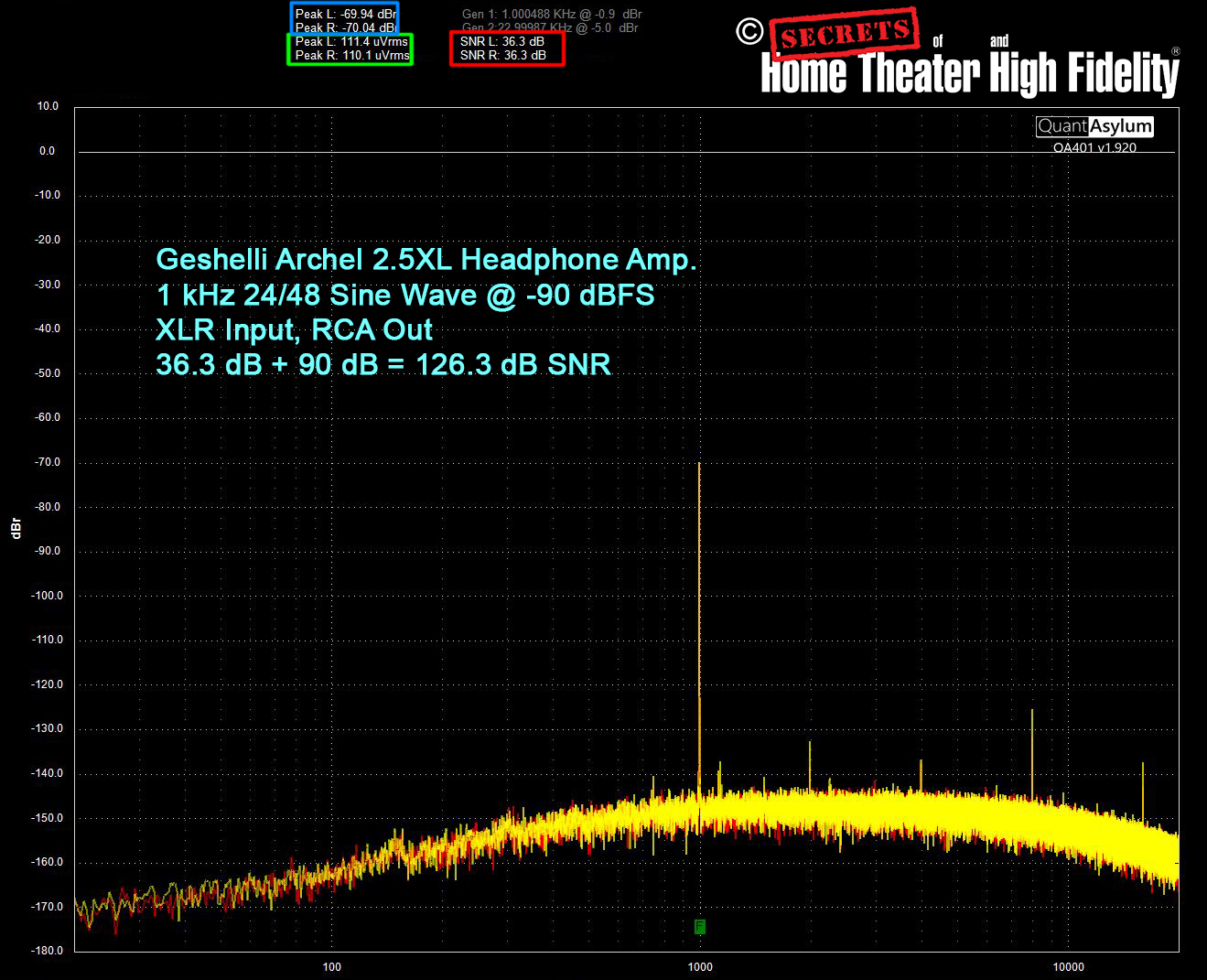
¬
SNR measurements were done using the QuantAsylum QA401 Analyzer. Using a -90 dB 1 kHz test signal applied through the XLR inputs, and measuring through the RCA outputs, we determined the analog SNR (A-Weighted) of the Geshelli Labs Archel 2.5XL to be just over 126 dB. Converted to bits that means the Archel 2.5XL can resolve 20.7 bits.
The outstanding Geshelli Labs Archel 2.5XL headphone amp and J2 DAC prove that, occasionally, you still can get significantly more than what you pay for.
- Sound quality for the price.
- Gorgeous custom wood cases.
- J2 DAC sounds and measures clean.
- Archel 2.5 XL amp has loads of clean power.
- Labels on the J2 DAC to explain the LEDs.
- A little bit higher SNR on the J2 DAC would be nice.
The Geshelli Labs J2 DAC and Archel 2.5XL headphone amp appeal to me on so many levels that it’s hard not to gush just a little. I mean you just have to smile when looking at this little stack and consider what it is. Visually, with the fine wood cases, the clear plexi faceplates, the choice of lighting, and visible circuit boards, it looks like a DIY audio nerd’s fantasy come to life, but with a result so much better than any DIY’er could hope to achieve. The level of personalization and individual support that the company offers for a buyer to make a stack like this “their own” is unheard of and unavailable from any of the “big players” in this space. It sets Geshelli Labs apart on a completely different level and it shows in both the company’s growth and customer loyalty. Never mind that the finishing on the wood cases (we won’t even go into some of the special carved options the company has recently unveiled) adds an element of fine art and craftsmanship you don’t see at this level. And the fact that it is a completely family-run operation from start to finish, in my book, is something to be admired and lauded. Geno, Sherri, and the rest of the family at Geshelli Labs are very much what HiFi is all about and could teach some of the established brands a thing or two on that score.
Yet all of this would be meaningless if the product didn’t perform, and it certainly does! From both an objective and subjective level, the J2 DAC and Archel 2.5XL work together to make a fantastic-sounding tabletop headphone solution. If you want to get the best out of your headphones and you’re not looking for a particular kind of sound, then this Geshelli Labs stack makes for a superbly serious listening system that won’t put you in hock. Plus, it has more than enough power to drive just about any headphones out there. You’d have to spend some serious money to get noticeably better performance. And it probably would be with only half as much personality. Keep on rocking Geshelli Labs!
Highly Recommended!
The author would like to thank Dr. David Rich for his invaluable assistance in this review.



